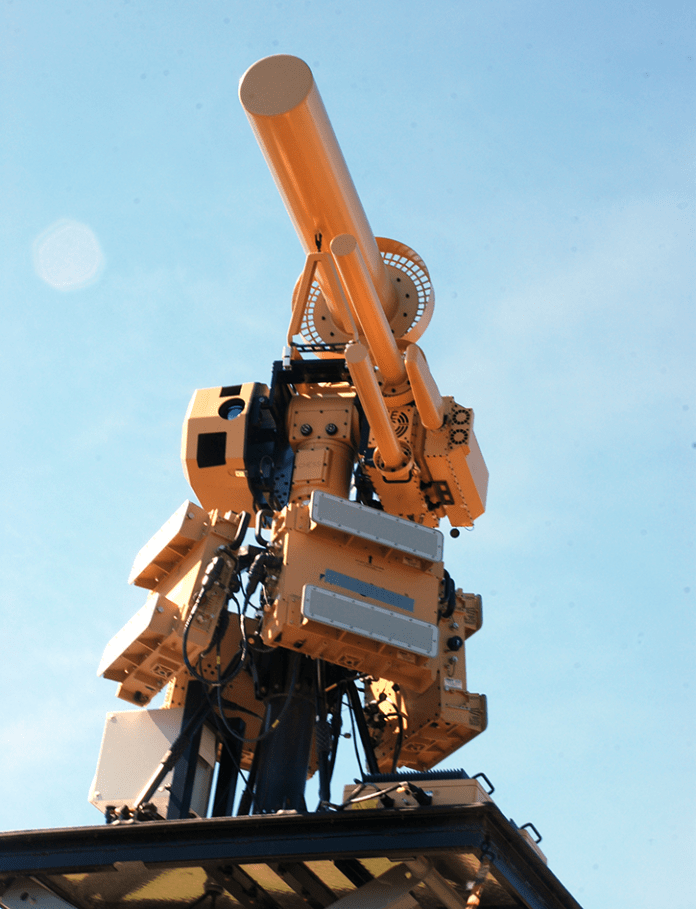
A counter UAS system provided by Liteye. Photo: Liteye
Federal guidance that leaves airports to essentially figure out on their own the legality and effectiveness of technologies to detect small drones in their airspace is insufficient and instead the government needs to establish a standard approach to make it easier for airports to adopt these technologies, says an interim report by an industry task force charged with making recommendations for mitigating threats from unmanned aircraft systems (UAS).
The interim report also says that when it comes to taking out a potential UAS threat at an airport, the federal government, which has the sole authorities to do so, needs to get its act together fast in order to help airports when they need it.
“The federal government must rapidly finalize and practice a defined plan for how to respond to a UAS incursion at an airport,” says the Blue Ribbon Task Force on July 12 in the interim report on UAS Mitigation at Airports. “The current federal position, which is ‘the U.S. government is working to develop the federal response to a persistent UAS disruption at a major airport,’ is insufficient and leaves airports vulnerable.”
The task force is co-chaired by Michael Huerta, former administrator of the Federal Aviation Administration (FAA), and Deborah Flint, CEO of Los Angeles World Airports, and was put together by the Association of Unmanned Vehicle Systems International and the Airports Council International-North America. The task force says it plans to release a final report later this year and then will discuss its recommendations with government and congressional officials.
In May, the FAA issued guidance to airports that systems used to detect UAS are allowed under U.S. law but left it to airports to sort out if these technologies are allowable.
“Entities seeking to evaluate or deploy UAS detection systems should be award the evaluation or deployment of such systems, even systems that are marketed as passive detection systems, may implicate provisions of law (such as Title 18 of the United States Code) on which the FAA cannot authoritatively opine,” the agency said in a May 7 letter to airports. “Therefore, the FAA cannot confirm the legality of any UAS detection system.”
Title 18 prohibits the downing of an aircraft in U.S. airspace.
Congress in 2018 gave the Departments of Homeland Security and Justice authorities to counter potential UAS threats near critical infrastructures and other assets. The legislation, which was signed by President Donald Trump in December, also gave the DHS Science and Technology Directorate and the FAA authority to test systems to counter UAS (C-UAS) in addition to testing for detection, tracking and identification of drones.
The Departments of Defense and Energy also have limited authorities to use C-UAS systems to protect their domestic facilities.
Federal and industry stakeholders are concerned that some technologies used to detect and track UAS could interfere with electronic systems used for airport operations and even nearby businesses and residences. The same is true with C-UAS technologies, which in bringing down a potential drone threat create havoc elsewhere.
The interim report also outlines the capabilities and roles of various technologies used for detecting, tracking, identifying and countering UAS, and points out their shortcomings.
For example, it says radio frequency (RF) techniques are primary means of detecting, tracking and identifying small drones out to one to three kilometers but the FAA has concerns about the impacts of RF signals on air traffic management and aircraft safety. The interim report also says “dark drones,” for which their RF signal has been turned off, can’t be detected using RF-based systems.
The report was commissioned in April and followed a costly interruption last December at London’s Gatwick airport due to a drone intentionally being flown to disrupt operations. The drones’ radio frequency (RF) signals were turned off, masking it and its operator or operators from RF detection techniques.
This article was originally published in Defense Daily, a sister publication to Avionics, to read the full version, click here.